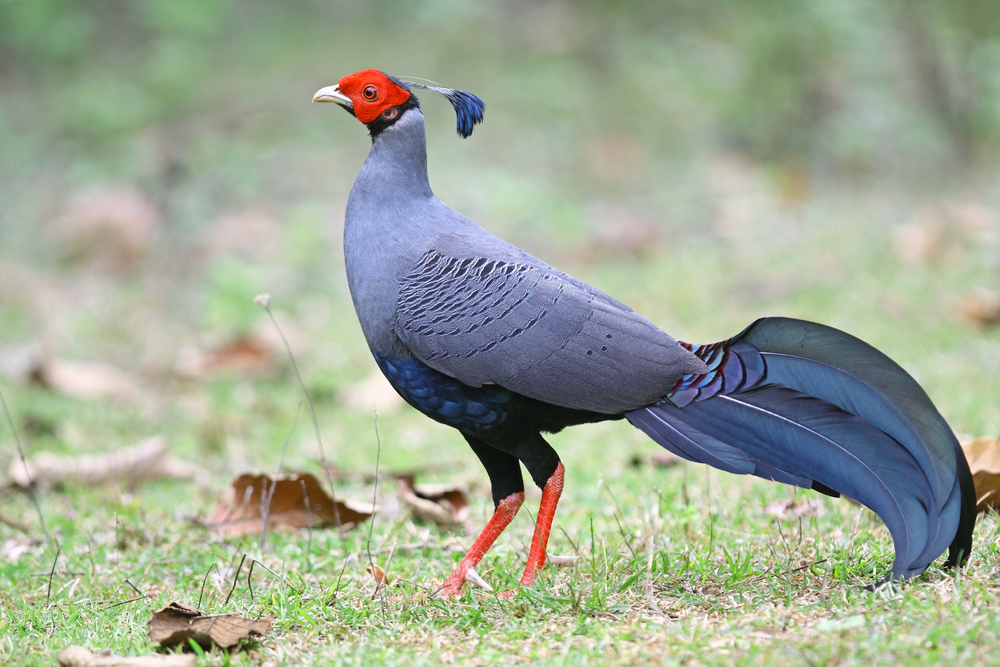National Symbols: National Bird
Siamese Fireback (common name)
Lophura diardi (scientific name)
Designation
Official
Classification
- Kingdom: Animalia
- Phylum: Chordata
- Class: Aves
- Order: Galliformes
- Family: Phasianidae
- Genus: Lophura
- Species: L. diardi
The Bird
The Siamese fireback is a colorful, medium-size pheasant native to the Southeast Asian peninsula. The bird derives its name from the male's fire-colored back plumage. About 80 centimeters (32 inches) long, the male displays a head crest of long purple-black feathers. It has grayish feathers with a wave-like pattern on its breast, neck, and upper back. Smaller than the male at about 60 centimeters (24 in), the female lacks the head crest and is brown with black wing and tail feathers. Both genders have bright-red facial wattles, red feet, and a long, curved tail with a brilliant metallic blue-green sheen.
The fireback inhabits lowlands, bamboo stands, and scrub and evergreen forests at relatively low altitudes and is often spotted on roads and forest trails. It consumes insects, worms, fruit, and berries. When courting, a male will whistle and flap its wings, and the female lays about 4–8 rose-colored eggs.
The Significance
Thailand's national bird, the Siamese fireback, has been featured on the nation's postage stamps and is a highlight of birding trips to the country. This pheasant appears in traditional Thai literature and is referenced in Thai history. The bird's scientific name refers to French naturalist Pierre-Médard Diard, who in 1862 gifted a pair of these pheasants to Napoleon III of France. Today Thailand is home to an estimated 5,000 Siamese firebacks, and the species' numbers are presumed to be slowly declining from extensive logging, population growth, and large-scale hunting and snaring.
Article written for World Trade Press by WTP Staff.
Copyright © 1993—2025 World Trade Press. All rights reserved.

 Thailand
Thailand 